CRICKET + CRICKET XL PYRAMID TARP ™
A SoloMid XL with a Beak Instead of a Door!
WEIGHT:
7.5 oz (.5 DCF) → 213gm
9 oz (.75 DCF) → 255 gm
12.5 oz (20d Pro SilPoly) → 354gm
XL WEIGHT
9 oz (.5 DCF) → 255gm
12 oz (.75 DCF) → 340gm
16.5 oz (20d Pro SilPoly) → 468gm
The Cricket Pyramid Tarp ™ is the SoloMid XL with a beak instead of a door! The lightweight Cricket Pyramid is the perfect balance between simplicity, protection, and pitch options, without the hassle of a zipper!
5-panel design, with variable catenary curves at panel intersections, make for a very tight pitch and low wind buffeting, which equals less noise compared to a wrap around design with fewer panels. The front can be pitched low and wide, partially closing off the beak end for protection from high winds and other inclement weather, or pitched high during fair weather for maximum ventilation.
The SoloMid XL InnerNet fits the Cricket Tarp perfectly. By adding the InnerNet, it becomes the Cricket Tent!
“I have been nothing but impressed and so have a few of my hiking friends, no less than four have ordered a Cricket since using and/or borrowing mine.” – I DON’T DO HILLS
FEATURES
• 5-panel design with variable catenary curves at panel intersections make for a very tight pitch and low wind buffeting.
• 8 Tieouts : 4 Corner, 1 Front Beak, 1 Top Apex, 1 rear center ground and center panel.
• Good balance between simplicity, protection, lightweight and pitch options with no lightweight #3 door zippers to fail.
• Front beak is adjustable in pitch height
• Setup in under 2 min after a little practice: We’ve done it in 55 sec!
• Linelocks at all edge tie-outs. Can be removed to save about 1oz.
• Reinforced apex with external hang loop.
• Rear panel has mid-panel tieout.
• 1 Internal Apex hang loop
INCLUDES
• Stuff Sack
• 40′ MLD Pro Guyline
• 1.5 oz Tube McNett Silnet Seam Sealer / DCF versions do not need sealing
• 6″ Aluminum Trek Pole Jack
NOTE: The SilPoly version of this tarp requires seam sealing. Check out the “Seam Sealing” tab for instructions & tips. DCF versions are taped and sealed.
DCF NOTE: DCF XL VERISON IS CUSTOM AND NON RETURNABLE
Weights are +/- 7% depening on fabric batch.
DIMENSIONS:
LONG REAR EDGE: 110in | 280cm
SIDE SIDE EDGE: 56in | 142cm
HEIGHT AT APEX: 55in | 140 cm
FRONT VESTIBULE OVERHANG: 30in | 76cm
XL DIMENSIONS:
LENGTH: 110 in | 280 cm
WIDTH: 90 in | 220 cm
PEAK HEIGHT: 59″ / 150cm
FRONT VESTIBULE OVERHANG: 35in | 90cm
WEIGHT:
7.5 oz (.5 DCF) → 213gm
9 oz (.75 DCF) → 255 gm
12.5 oz (20d Pro SilPoly) → 354gm
XL WEIGHT
9 oz (.5 DCF) → 255gm
12 oz (.75 DCF) → 340gm
16.5 oz (20d Pro SilPoly) → 468gm
DCF NOTE: DCF XL VERISON IS CUSTOM AND NON RETURNABLE
Weights are +/- 7% depening on fabric batch.
MLD PRO SILPOLY SEAM SEALING
COST: $45
WEIGHT: 1.0 oz | 28 gm
The 20D Pro SilPoly version of this tarp requires seam sealing. We include seam sealer with all our SilPoly and SilNylon shelters. You can seam seal this tarp yourself in about 30 minutes with the supplied seam sealer OR as an extra service we can do it for you!
WATCH A VIDEO HERE
We use a diluted 100% Silicone Sealer on the exterior stitching above the lower hem. Factory seam sealing can add about 1 week to the order process. Seam sealing adds about 1 oz | 30 gm +/- depending on the shelter size.
Factory sealed shelters are returnable under the regular return policy, where as DYI seam sealing is not.
We STRONGLY suggest you pitch the shelter and test before a trip. Set up before a good rain or spray with a garden hose nozzle arching up in the air and down on the shelter simulating rain for at least 15min. Touch up or resealing may be needed eventually.
NOTE: DCF shelters do not need seam sealing.
EASTON NAIL STAKES STAKES
COST: $15
WEIGHT: 2.2 oz | 62 gm
Add 6 Easton Nail Stakes to your purchase. Stakes are 6.5 in | 16.5 cm tall and each stake weighs 0.27 oz | 8 gm.
MLD 2.7 MM PRO REFLECTO GUYLINE
COST: $6
WEIGHT: 2.9 oz | 82 gm
This product includes 40′ of our regular, non-reflective Pro Guyline in your choice of Yellow or OD Green. You can upgrade this to 40′ of 2.7 MM Reflecto Pro Guyline which has properly spaced reflective markers that are bright enough to see, without making your shelter look like that obnoxious house on your block with the out-of-control Christmas lights.
Each of our SilPoly and SilNylon shelters comes with one tube of McNett Sil-Net Seam Sealer. It is STRONGLY recommended you use this supplied seam sealer to seal and strengthen the seams of your shelter.**DCF (Dyneema® Composite Fabric A.K.A. Cuben Fiber) Shelters do not need seam sealed.**
INSTRUCTIONS
1. Pitch and inspect your shelter for any issues. Once it is seam sealed, it is non-returnable except for significant defects.
2. Use the supplied SilNet Sealer and ONLY the SilNet Sealer. (If you want to dilute it or use some other silicone sealant it should work OK and is common (research this yourself online) but, you are on your own- results may vary and are not covered by warranty! If you go this route, it is assumed you know 100% what you are doing and have done it before!!!)
3. Pitch the shelter tightly. Temperatures should be above 60 F and humidity below 80%. You may do this indoors. You may also do one seam at a time indoors if the seam is stretched slightly. Pinning one seam from each end on the floor between two heavy objects works OK.
4. We use the SilNet straight from the tube. Do not make a big hole in the sealer tube – start small so that you can control flow. Multiple small application is a lot better than one big smear.
5. Main Seams: Place a small bead on the seam along the stitching. Work on a 3’- 4’ section at a time. Use a finger to press the sealer into the stitching and the small valley at the edge of the seam where it is rolled under.
ALLOW AT LEAST 24 HOURS TO FULLY DRY.
NOTE: You only need to seal the OUTSIDE of the shelter. You do not need to seal the bottom perimeter roller edge stitching. It is OK to add a small bead on the leading edge of the triangle tie-outs reinforcement stitching, but it is not required.
SPECIAL AREAS: Add a little sealer to any tie-out stitching on the middle of a panel (Mids, Cricket, and SuperTarps). Seal the zipper storm flap stitching and tie-outs on the Mids. Seal the stitching and apex tie-outs areas on the Mids, Crickets, and TrailStars.
IMPORTANT: Do no go back and forth over the wet seam too much – after a minute or three it will get gummy and look bad; it is better to wait for 8 hrs and then add some over any area you missed.
Watch a how to video HERE.

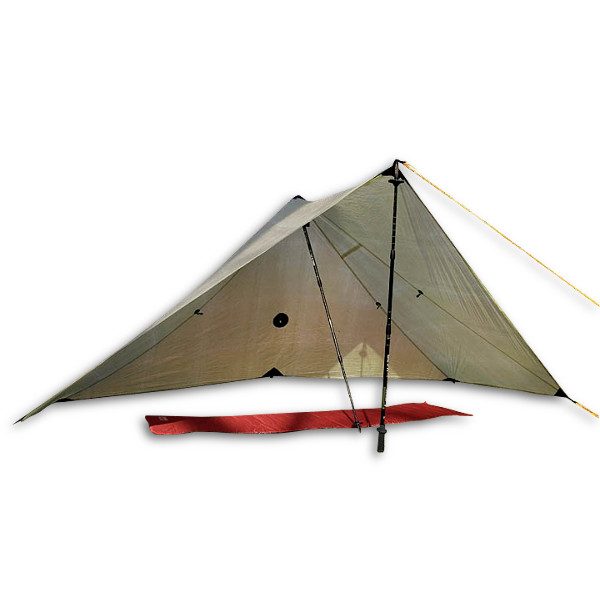
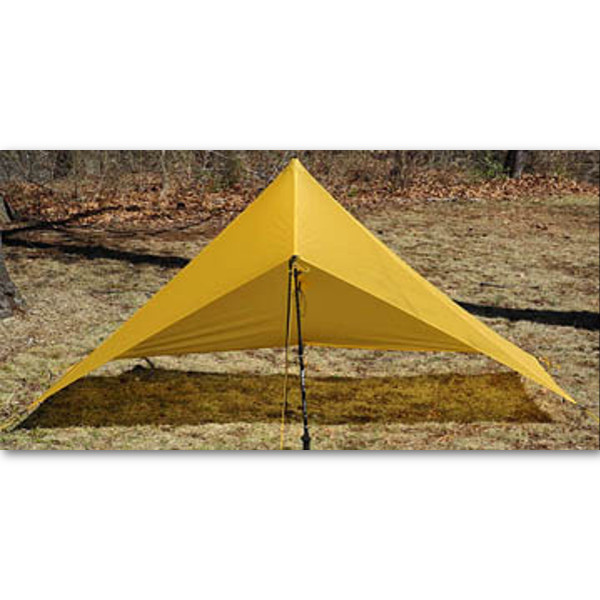
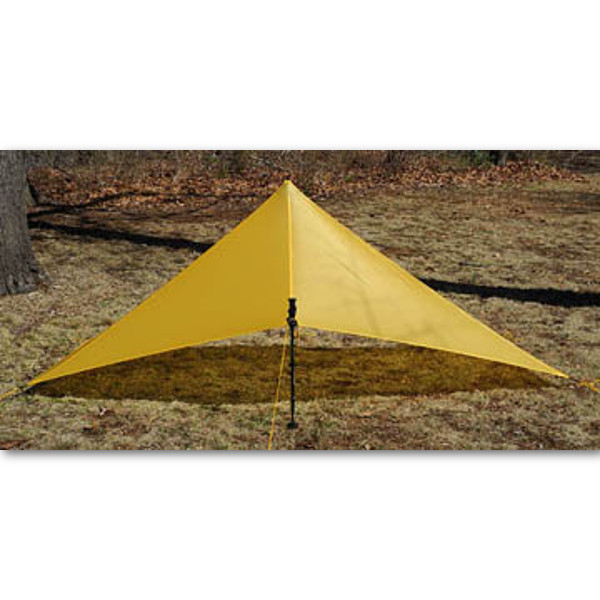
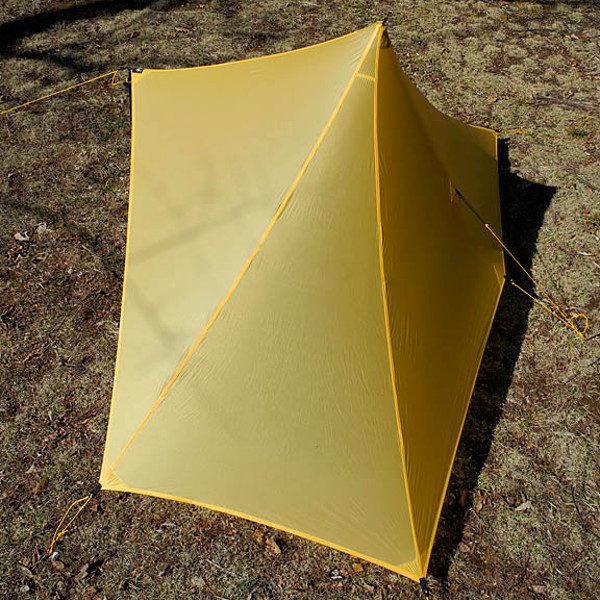
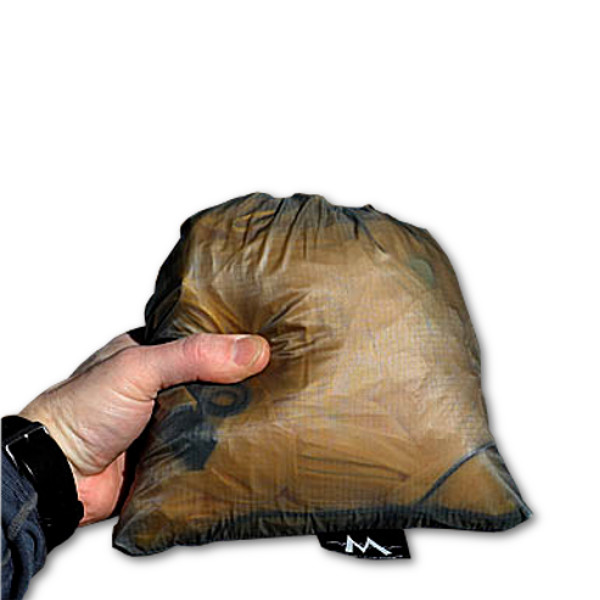
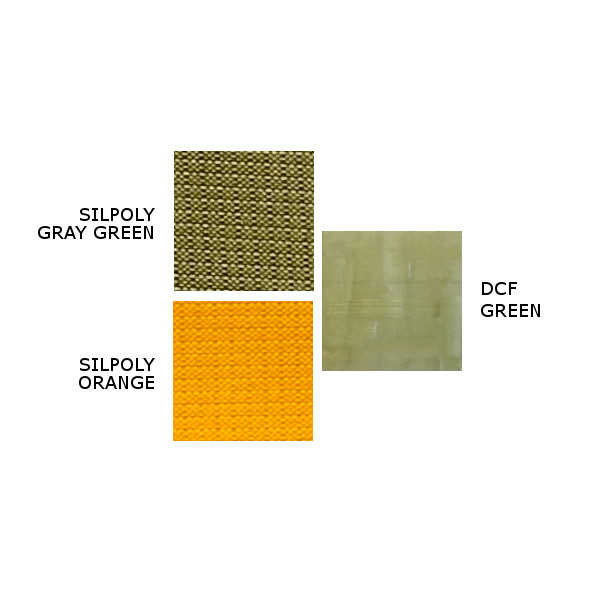
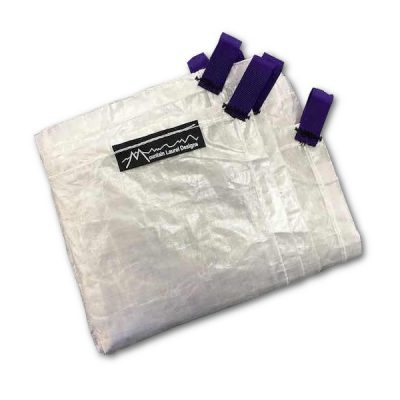

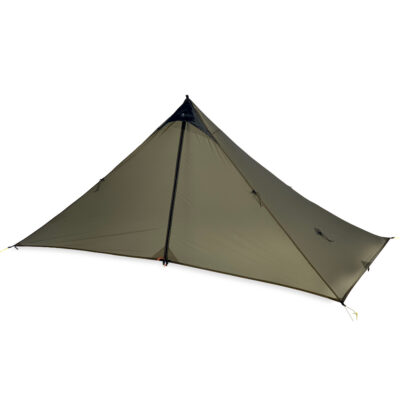
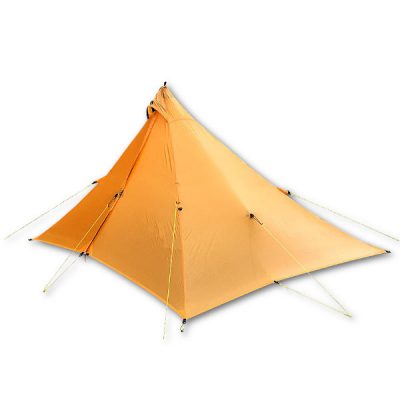
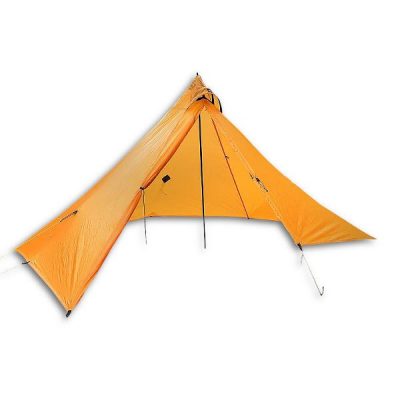
Dave Vaughan –
Fantastic little tarp!
Only a short term review as I’ve only use the tarp three times but as with all shelters you get an instant feeling.
The Cricket is lightweight (I have the 2017 Silnylon version), pitches in minutes, has variable pitch heights, beak options and offers superb rain and wind protection.
On my first outing with the Cricket, I pitched on snow with heavy snow falling. Some hours later the snow changed to heavy rain with heavy winds around 25-30mph with higher gusts. The Cricket had no issues at all.
https://farm1.staticflickr.com/898/41149374522_809fd1f5ba_b.jpg
I have a few MLD shelters now and love them all, my Trailstar is and probably always will be my favourite but the Cricket and Duomid will battle out second spot.
Karen Soubeyrand –
I bought the Cricket with the netting insert several years ago…probably 6 years ago. I bought the Cuben fiber version and the insert has the Cuben Fiber floor. It was a big investment for me but I have no regrets. All tents/ tarps do well under moderate conditions…the real test is when things go badly. This tarp has withstood incredible wind beatings along the Tonto Trail…2 straight days of deluge at Lake Sally Ann in Glacier Peak Wilderness and another biblical deluge topped off by 4″ of heavy, soggy snow in the Emmigrant WIlderness with no failures. Not one drop of water inside…no collapsing….no problem. I would recommend the Cricket!
Wicked (verified owner) –
Just finished thru hiking the Appalachian trail, used the cricket and inner net combo the whole trip. This tarp stood up to pouring rain, sleet and snow! I love the fact I could use the tarp and bug net separately. I could sleep under the stars just using the net tent, and if it was raining I could eat under the tarp and stay nice and dry! The only issues I had with this set up was some condensation build up when set up in storm mode, not a lot of airflow. Overall the cricket preformed well, was very durable, and set up was a breeze! I would definitely buy this product again, craftmanship is top notch!
ron bell –
Super and congrats on your hike! It’s my personal AT Go To shelter too. Yes, tarps and most any shelter will have condensation in the perfect “wrong” weather conditions.
Mark (verified owner) –
I’ve used this in the UK in weather that really shouldn’t be possible to shelter from in a tarp. Winds up to around 50mph were dealt with, albeit with the shelter getting bent out of shape a bit. Heavy rain not an issue provided you pitch correctly with respect to the wind direction. An ideal tarp to bivvy under, light, easier to pitch that the Trailstar in my opinion and much better protection than you might expect. Also the orange version looks great in photos. I think this is as close to perfect as a tarp can get.
Kaden –
I used this tarp (.5 OD Green DCF) 3,000+ miles this year on the Pinhoti and Pacific Crest Trail’s. I had to patch one small spot once I got home. It performs very well in rain and wind and makes very little noise even in high wind scenarios. The variable pitches are very nice, especially the low pitch so long as you don’t mind the crawl to get inside. If you are trying to get your base weight down really low but don’t want to have an extremely tiny tarp this is definitely a good option. I even shared the space in one night of rain and kept both people and gear dry all night long. I used a bivy which was nice but the space inside this tarp gives enough room for innernets, bug nets, or whatever else you might want to use. I cannot wait to put more miles on this awesome shelter.
Drew P –
Solo tarp of all tarps. I bought this for summer camping and had such a great experience with it using the inner-net. After a number of adventures and finding it pitches in almost any spot I decided to see how well it handled snow…..
Like a champ. The rickety Cricket tarp does it all. Blowing wind and snow, the Cricket held onto 6 snow stakes and ski poles with out a chirp. My bivy stayed shielded from a few inches of blowing snow and sub freezing temps. Awesome!
Paul (verified owner) –
We use our orange silnylon cricket as a cooking/eating shelter. So far we have used it only in winter, with snow on the ground. It gives us a place to hang out instead of being stuck in the tent. It blocks the wind, and snow, so it keeps us warm. With snow, you can dig down and make a bench to sit on, and a place to put your feet and legs, and this gives more effective headroom. The cricket totally lives up to what we imagined we would use it for!
Linda West –
Just spent 3 months living on the PCT in this tarp. Used the innernet for most of the trip then after mosquitoes were no longer an issue switched to just a ground cover and Bivy. It pitched everywhere as long as there was a cowboy camping pad I could pitch it. It worked in heavy hail, rain and wind perfectly. Pitched fast and having epic views while cooking under the beak in inclement weather was a plus.
I used a DCF tarp to save a bit of weight and it was perfect. I think perhaps the Sil version would more easily pitch low and still be tight. I have a silnylon Cricket and am looking forward to experimenting with theat one to see its advantages. 900 miles and it shows no signs of wear although hit by strong gusts & pelted with pine cones and small branches. Everything just bounced off of it.
Miner (verified owner) –
I used the DCF version of the Cricket Tarp for 5 months on the CDT in 2023. I normally use a MLD Grace Solo Tarp, but when expecting really bad weather, this tarp provides much better protection which I thought would work better on the CDT. I didn’t always set it up at night as I like to cowboy camp, but it handled adverse weather well: high winds, several inches of snow, and thunderstorm downpours. It was easy and quick to setup in the dark when midnight showers rudely awakened me cowboy camping. Though I own the solo mid inner net that works with this tarp, I chose to carry my MLD SuperLight Bivy instead due to my preference to cowboy camp. It worked well with the tarp against bugs and any minor wind blown spray from the beak opening when I misjudged the wind direction when setting up. There was room under the tarp for 1 person with all my gear with plenty of space to spare. Tarp was bought a few years before my CDT trip and had light use. It still is in great shape so I plan to continue to use it for the foreseeable future.
Charles J Mocilac (verified owner) –
Been using my Cricket for several years now and still think this is a great shelter. September 14, 2025, was camped at 11,047′ at Twin Craters Lake in the Rawah wilderness, Colorado when a major snowstorm blew through. After rain and hail, it began to snow around 11pm and when I woke up at 6am there was over two inches of snow on the ground. I knocked off quite a bit of snow from the panels of the Cricket, I was warm, dry and safe. The Cricket performed like a champ!